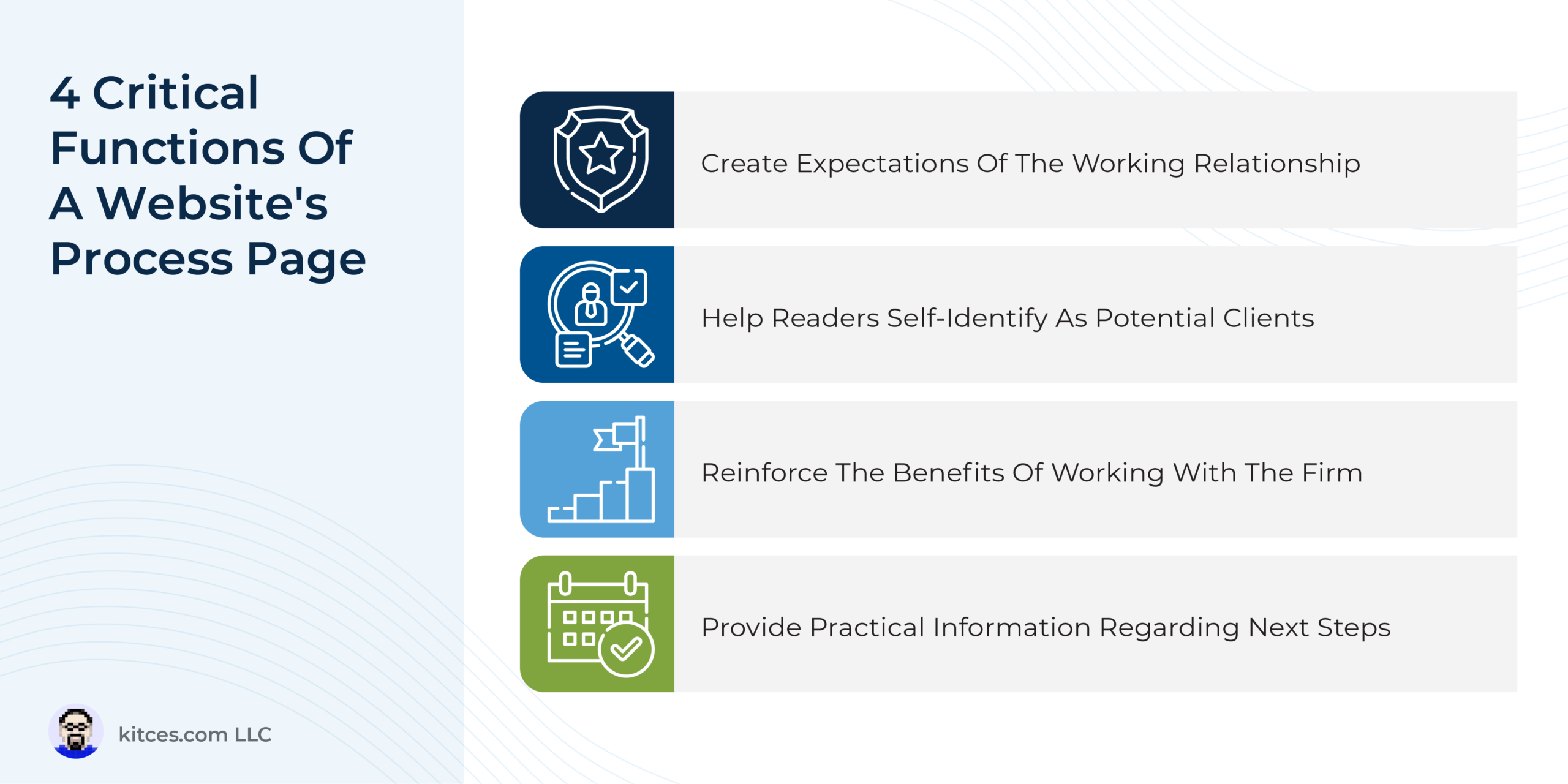As marketing and prospecting processes become increasingly digital for financial advisors, many prospective clients learn about advisors and what they offer not from an introductory call, webinar, or speaking event but from the advisor’s website itself. Talking about money is often highly personal and can leave individuals feeling vulnerable, so choosing who to serve in such a high-trust role as a financial advisor can have immense stakes. Which is why it’s crucial for websites to give prospects the ability to see themselves as clients, and to understand what beginning and maintaining an advisor-client relationship might look like. These steps can make a measurable difference in ‘demystifying’ an otherwise obscure process for a first-time prospect and help them move into action.
In this guest post, Mikel Bruce, CEO of TinyFrog Technologies, discusses building a prospect-focused Process page into an advisory firm’s website as a crucial part of the sales funnel to get calls from prospective clients by clarifying the process, demonstrating an advisor’s unique value proposition, and providing an easy way for prospects to ‘raise their hand’ when they’re ready to act.
As a starting point, a well-built Process page performs 4 critical functions. First, it establishes expectations for the prospect around the process of becoming a client (including the type of calls involved, the onboarding steps, and how long it takes) and the general communication style of the firm. Importantly, keeping this overview simple, high-level, and prospect-focused is crucial. Second, a Process page should use language that helps prospects identify with and envision themselves as ideal clients of the firm. Third, the Process page should describe the specific (and likely niched) issues the firm addresses with its clients. Fourth, the Process page clearly shows how interested prospects can move forward in scheduling a consultation (or however a firm would like to meet with them) by offering easily accessible call-to-action tools (e.g., calendar and scheduling software tools built directly into the Process page). Process pages can also include a simple FAQ section to address questions about fees, working style, or the frequency of meetings that ongoing clients can expect.
Once advisors have created their Process page, they have a few ways to start optimizing it. First, they can build funnels that direct traffic to the Process page from different places on the website, with multiple user paths depending on the type of prospect and their pain points. Advisors may also want to A/B test various aspects of their pages – calls to action, for example, or different language – to see if one feature or another influences how many prospecting calls they get in turn.
The key point is that finding a trustworthy advisor with whom prospective clients can build a relationship is not a quick or easy process – but an advisor with an effective Process page can help prospects envision the unique value they can derive from engaging with the advisor, making it easier for them to understand the benefits of a long-term planning relationship and, ultimately, to decide to become clients!


